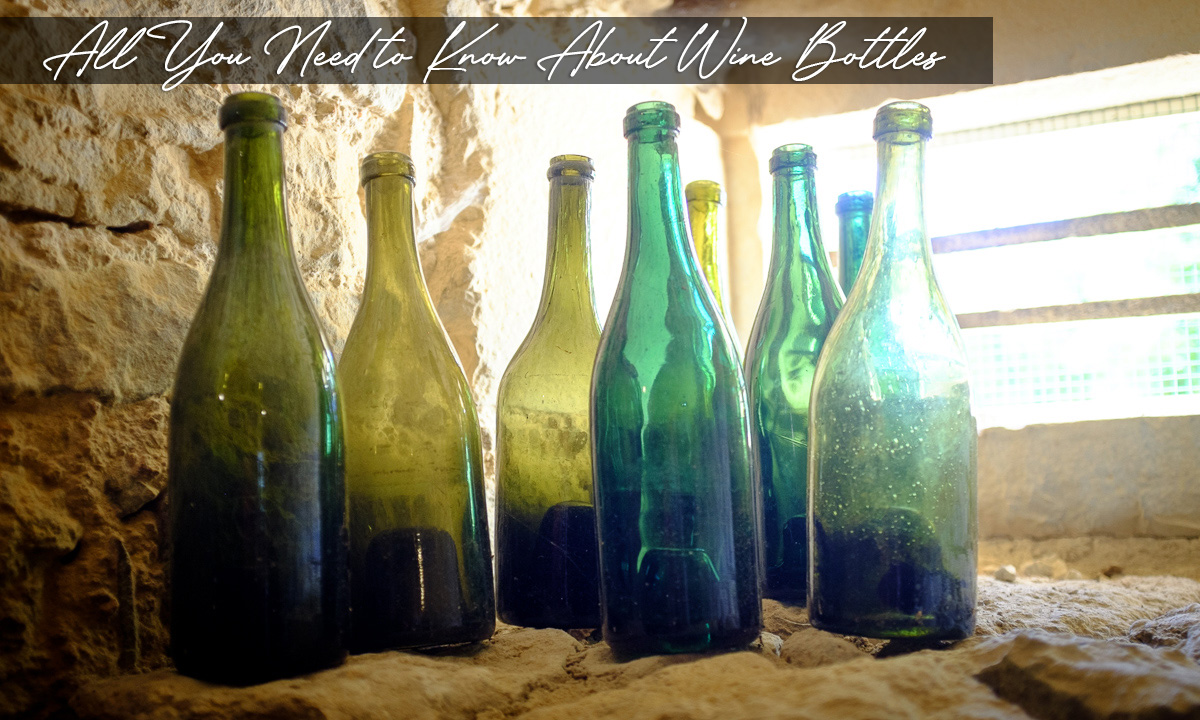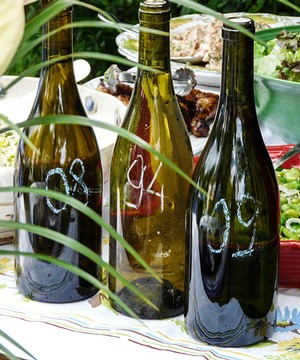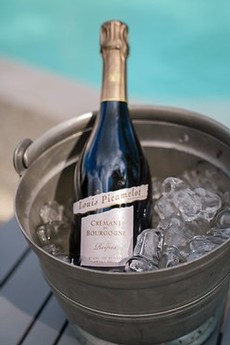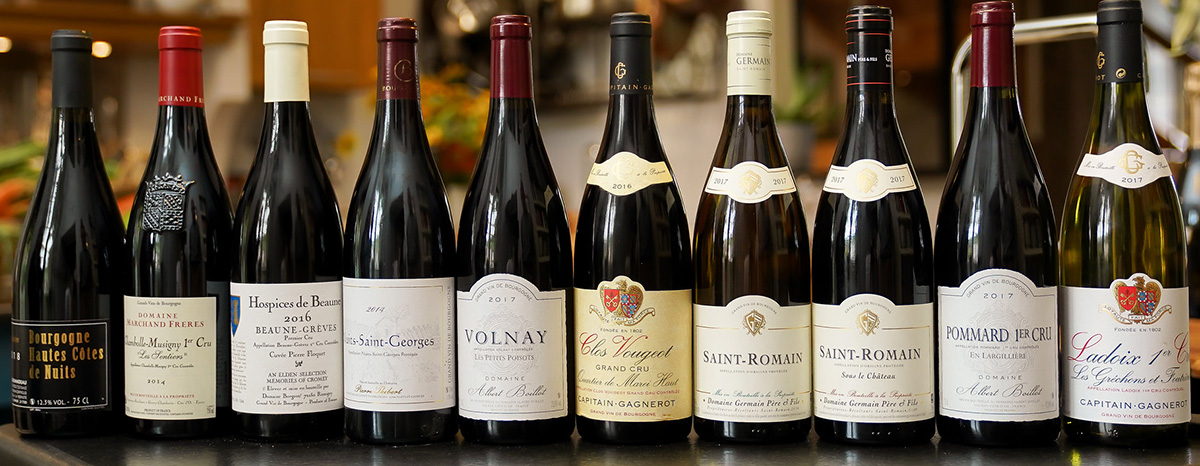
We often give a lot of thought to the color and character of the wine in a bottle, but not so much thought to the bottles themselves. Perhaps you think they’re all more or less the same? Far from being uniform across all wine types, the bottles we drink from have their own characters too, with many different designs, colors and materials. Here we look at how wine came to be stored in bottles, and what difference they can make to the wine inside them.
It was in the early 18th century that the shape of the modern wine bottle is believed to have become the standard. It coincided with the discovery that keeping wine stored on its side had many benefits; for one, it kept the wine in contact with the cork, which was essential because it prevented the cork from drying out and cracking, thus making a poor seal in the bottle top. It also saved space and looked neat (something which many cellar owners nowadays would also attest to).
 There are many wonderfully shaped bottles that can be seen all over the world. Of course, the most elegant and important bottle (at least for our purposes!) is the Burgundy bottle. Rising to prominence in the 19th century, its curved sides are instantly recognisable, and very easy for glassmakers to create in large numbers. The elegance of the bottle’s sloping shoulders really echoes the world-famous elegance and quality of Burgundy wines. (There is are also Burgundy wine glasses, available from Elden Selections, which use a similar elegant shape to capture the aromas and flavors of Burgundy wine perfectly).
There are many wonderfully shaped bottles that can be seen all over the world. Of course, the most elegant and important bottle (at least for our purposes!) is the Burgundy bottle. Rising to prominence in the 19th century, its curved sides are instantly recognisable, and very easy for glassmakers to create in large numbers. The elegance of the bottle’s sloping shoulders really echoes the world-famous elegance and quality of Burgundy wines. (There is are also Burgundy wine glasses, available from Elden Selections, which use a similar elegant shape to capture the aromas and flavors of Burgundy wine perfectly).
Other French wines can come in different bottles. There’s the Bordeaux wine bottle, thought to have arisen after the Burgundy style was created, and with much higher shoulders. These were probably designed to try to collect the sediment found in old Bordeaux wines during the decanting process. In addition, they serve to set the bottles apart from their Burgundian counterparts.
In the Alsace, yet another bottle style grew popular. Here you’ll find tall, slim bottles with no shoulders to speak of at all. Instantly recognisable, there may also be historical and practical reasons for the shape; whilst Burgundy and Bordeaux travelled to Great Britain and further afield over the ocean, Alsace wines were mainly transported via the river Rhine on smaller boats, meaning there was less room for wide-shouldered bottles. As the waters were also less choppy, they could afford to use thinner more delicate bottles.
 Finally, for sparkling wines (Crémant in Burgundy!), you may notice that the glass seems thicker. This is to strengthen the bottle to withstand the enormous pressures that the wine is kept in—usually between 70 and 90 pounds per square inch, or between two and three times the pressure of a car tyre. They also tend to have a deeper punt—that’s the name for the indentation in the bottom of a wine bottle. This is to add strength, but also to aid in stacking bottles in storage, and sometimes to catch sediment. Interestingly, you’ll almost never see a punt in a Riesling bottle.
Finally, for sparkling wines (Crémant in Burgundy!), you may notice that the glass seems thicker. This is to strengthen the bottle to withstand the enormous pressures that the wine is kept in—usually between 70 and 90 pounds per square inch, or between two and three times the pressure of a car tyre. They also tend to have a deeper punt—that’s the name for the indentation in the bottom of a wine bottle. This is to add strength, but also to aid in stacking bottles in storage, and sometimes to catch sediment. Interestingly, you’ll almost never see a punt in a Riesling bottle.
You may be wondering what role, if any, the color of the bottle plays. That, too, serves a purpose. The majority of red wines are kept in dark green or brown colored glass, to protect the wine inside from the harmful effects of ultraviolet light from the sun, which may affect color and taste over time. White wines are usually stored in clear glass, and rosé too, as this help to show off their more subtle hues. Blue glass is used mainly in wines such as Riesling or Muscat.
Not only does the color of glass matter, but so too does the thickness. Usually a bottle will weigh between three and four pounds. Weight is a subtly important factor; for the consumer, a heavier bottle can subconsciously make us think the wine is more expensive, weightier and complex even. For the retailer, it means heavier transport costs and increased fuel usage in shipping, so using lighter bottles can be a great way to reduce the carbon footprint of a winery.
So the next time you go to open your favorite bottle of wine, take a moment to look at the bottle, and notice what it might be telling you about the wine you’re about to enjoy.

For a choice of elegant Burgundian wines—and beautiful bottles—head to our wine shop, and consider becoming a new member of our fantastic Burgundy wine club. To read other articles on the world of wine and winemakers, head over to our blog.
